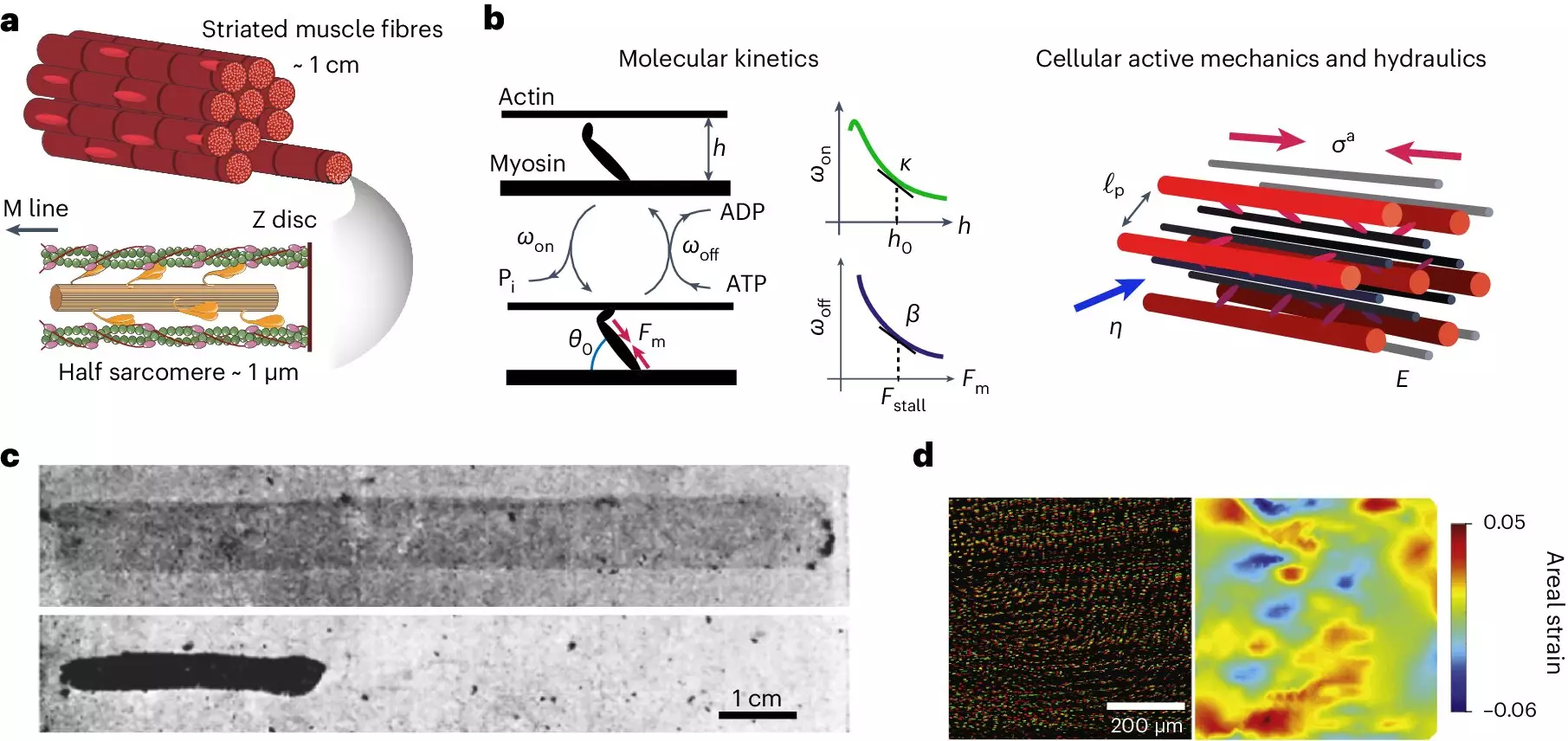Recent research from the University of Michigan has unveiled that the fluid dynamics within muscle fibers are indispensable to understanding muscle contraction rates. Traditionally, scientific inquiries into muscle mechanics have predominantly scrutinized individual molecular interactions, minimizing the significance of the structural and physical properties intrinsic to muscle fibers. With muscles being composed of approximately 70% water, the researchers have taken an innovative leap to assess how this fluid influences overall muscle performance, suggesting a remarkable shift in the way we consider muscle biology. Water is not merely a filler within the cells; it fundamentally shapes muscle action.
A New Concept of Muscle Elasticity
Suraj Shankar, in collaboration with Harvard’s L. Mahadevan, has pioneered a theoretical model that posits fluid movement as a key factor affecting muscle contraction speeds. During their analysis, they noted that muscles exhibit an intriguing property described as “odd elasticity.” This phenomenon means that when muscles contract lengthwise, they simultaneously bulge in directions that one might not expect. This three-dimensional interaction offers insights into how muscles can generate greater power than previously thought possible. The researchers’ findings urge us to rethink muscle structure as a dynamic system rich in interactions, rather than a simple assembly of molecules.
According to Shankar, “Muscle is more than the sum of its parts.” This statement brilliantly encapsulates the complexity of musculature. Muscle fibers should be viewed not just as rigid tissues but as intricate, active sponges—water-laden matrices that are continually squeezing and contracting. The traditional view, which concentrated only on molecular mechanics, fails to grasp this multi-faceted characteristic of muscle functionality.
The Mechanics of Contraction and Fluid Flow
The paradigm shift in understanding muscle dynamics further extends to contraction limits. To explore these concepts rigorously, the research team conducted modeling exercises across various organisms—ranging from mammals to insects. Their findings highlighted that not all muscle contractions are created equal. In the case of sound-producing muscles, such as those responsible for a rattlesnake’s rattle, fluid dynamics take a backseat to neural control and molecular properties. However, in small organisms like quick-flying insects, where contractions occur at unparalleled speeds, the influence of fluid flow catapults into the foreground. The researchers proposed that for such rapid movements, the internal water dynamics could dictate contraction limits—an insight that tantalizingly hints at the unfathomable capabilities of simpler life forms.
Shankar suggests that insects, especially mosquitoes, might race close to a theoretical limit established by fluid dynamics in muscle action. This connection offers a pathway for future research efforts focused on real-world confirmation of theoretical predictions, fostering potentially groundbreaking explorations in biomechanics.
Unpacking the ‘Active Sponge’ Concept
Muscle fibers’ characterization as active sponges brings forth new avenues of understanding within the biological field. This conceptualization emphasizes how energy transfer within the muscle is quite different from classical elastic behaviors we’ve studied. In traditional elastic systems, energy conservation governs responses to deformation. However, muscles exhibit a unique capacity to convert chemical energy into mechanical work, showing behaviors akin to an engine, defying the conservation laws of classical physics.
This phenomenon leads to the realization of “odd elasticity,” where muscle behaviors register deviations depending on deformation direction. The implications here are profound; they suggest musculature’s ability to conduct work may disrupt long-held principles in physics. This active energy conversion component reveals muscles as complex systems that harvest energy not just to resist deformation but to actively engage and produce power, adding layers of functional complexity not previously considered in muscle physiology.
Revisiting Muscle Physiology Through an Integrated Lens
The crux of Shankar’s and Mahadevan’s research beckons a re-evaluation of muscle physiology through a holistic lens that takes into account structural, dynamic, and fluid interactions. This integrated view encourages scientists to consider muscles as hierarchically organized materials, encompassing not only molecules but also the effects of their physical arrangement and the fluids that permeate them. The emerging focus suggests that to grasp the efficiency and performance of muscle systems, a broader perspective is imperative—a perspective that connects microscopic interactions with macroscopic performance outcomes.
By disentangling the complexities of muscle dynamics—from the interplay of water to the surprising behaviors of elasticity—this research invites a renaissance in how we conceptualize muscular function. The findings from this study will undoubtedly pave the way for improved understanding and advancements in fields such as biomechanics, physical therapy, and beyond, ultimately pushing the boundaries of our knowledge about how life itself moves and performs.

